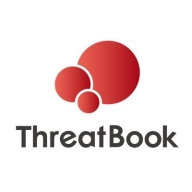

GitGuardian Platform and ThreatBook Threat Intelligence Platform are cybersecurity solutions, each excelling in different areas. GitGuardian is recognized for its cost-effectiveness and strong support, while ThreatBook is preferred for its comprehensive threat intelligence features despite its higher cost.
Features: GitGuardian Platform integrates seamlessly with developer tools and offers real-time secrets detection and advanced alert management. ThreatBook TIP provides an extensive library of threat data, robust analysis capabilities, and real-time threat alerts.
Room for Improvement: GitGuardian could enhance its high false-positive rate and expand its integrations with more tools. ThreatBook might improve its complex deployment process, simplify user experience, and offer more competitive pricing options to attract SMEs.
Ease of Deployment and Customer Service: GitGuardian facilitates straightforward deployment and prompt support, making it appealing for teams starting out. ThreatBook offers a more elaborate deployment model but provides in-depth support and configuration assistance.
Pricing and ROI: GitGuardian is known for competitive pricing providing quick ROI, appealing to budget-conscious organizations. ThreatBook involves higher initial costs but justifies them with long-term value, catering to those seeking comprehensive threat intelligence.

| Company Size | Count |
|---|---|
| Small Business | 10 |
| Midsize Enterprise | 9 |
| Large Enterprise | 13 |
GitGuardian is an advanced secrets security platform that strengthens Non-Human Identity security and ensures compliance with industry standards by detecting and managing secrets in development environments.
GitGuardian integrates Secrets Security and Secrets Observability, facilitating the detection of compromised secrets and managing legitimate secrets' lifecycle. Supporting over 450 types of secrets, the platform offers public monitoring for leaked data and employs honeytokens as an added defense. Trusted by over 600,000 developers, organizations such as Snowflake and ING rely on GitGuardian for robust secrets protection.
What features define GitGuardian?
What are the key benefits when evaluating GitGuardian?
In sectors like healthcare and telecommunications, GitGuardian is implemented for detecting and managing the exposure of sensitive information in code repositories. Teams benefit from its ability to integrate with platforms such as GitHub, allowing for immediate alerts and efficient remediation of security risks, enhancing application security by safeguarding operational environments.
ThreatBook Threat Intelligence Platform (TIP) serves as a sophisticated cybersecurity tool that empowers users with real-time threat analysis, helping organizations anticipate and mitigate cybersecurity risks efficiently.
This platform offers comprehensive threat intelligence capabilities designed to support cybersecurity teams in quickly identifying threats and automating responses. TIP aggregates vast threat data, providing enhanced visibility into potential attacks. Its integration capabilities allow seamless connections with existing security infrastructures, improving overall defensive measures and enhancing incident response strategies.
What are the most valuable features?In industries like finance and healthcare, ThreatBook TIP supports tailored implementations, addressing sector-specific threats through targeted intelligence feeds. Its adaptable architecture ensures that users can customize the platform to meet industry-specific challenges effectively, resulting in improved risk management and strategic threat handling.
We monitor all Threat Intelligence Platforms (TIP) reviews to prevent fraudulent reviews and keep review quality high. We do not post reviews by company employees or direct competitors. We validate each review for authenticity via cross-reference with LinkedIn, and personal follow-up with the reviewer when necessary.